The healing conversation between body and mind
Heidi Klima of Broken Wing Massage Retreat reveals how pain can teach us—and why we need to listen
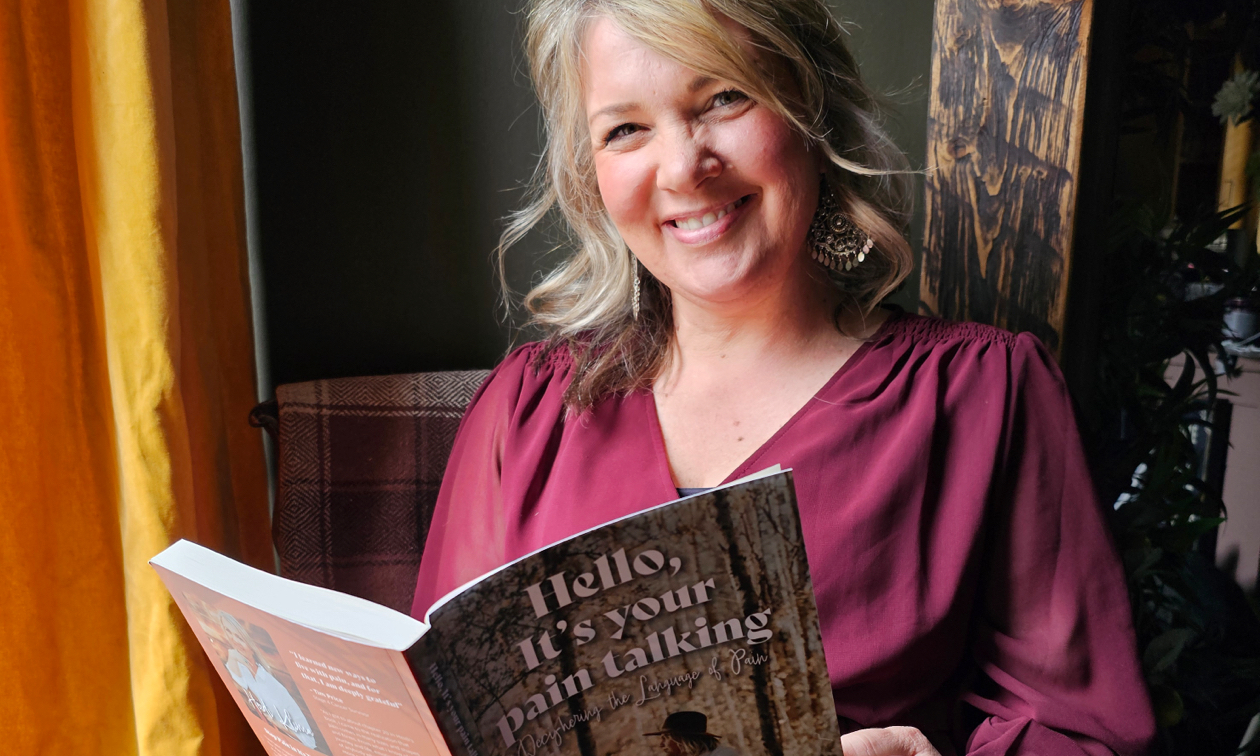
— Photos courtesy Kerry Shellborn
Heidi Klima didn’t set out to become a massage therapist, coach, or author. In fact, she nearly became an accountant—until a chance conversation and a gut feeling rerouted her life entirely. Now, as the founder of Broken Wing Massage Retreat and the author of Hello, It’s Your Pain Talking, she helps people decipher what their bodies are trying to say—especially when pain shows up without a clear reason.
Her journey is one of intuition, curiosity, and deep listening—to herself and to others. With a hands-on approach rooted in both science and sensitivity, Klima offers Fernie and Cranbrook clients something rare: a space where emotional and physical healing go hand-in-hand. In this interview, she shares how her early resistance to traditional paths shaped her bold career shift, what it means to treat the whole system (not just the symptom), and why learning to understand pain might just be the most empowering thing we can do.
Who are you and what do you do?
Who am I? I'd say I'm a creative person—someone who’s always thinking outside the box, no matter the situation. Since I was young, I’ve never just accepted things at face value, even from people you're "supposed" to trust. I’ve always been the type to dig deeper, to look at things from another angle.
That shows up in everything I do—whether it’s creatively mixing unexpected colours or finding new ways to solve problems.
Tell me a little bit about your journey to your professional career
Honestly, I’ve always hated school and traditional learning—it just never worked for me. I’ve always wanted to be kind of a free bird. But my first husband really encouraged me to go to school, and I was torn because I didn’t enjoy it at all. I figured, “Okay, I guess I’ll become an accountant,” which is hilarious in hindsight, because I’ve always struggled to add two and two together.
Wait—you had a career path where you were going to be an accountant?
I was just trying to be something. I thought I needed a “real” job. But I’ll never forget—this college counselor looked at me and said, “You’re going to be the most miserable accountant out there.”
And they were right. It was a perfect example of how little I actually knew myself at the time. I’ve always been strong-willed, but when it came to a career, I folded—I just didn’t know who I was.
Then one day, this guy came over for supper and started talking about how he used to be a runner with constant knee trouble. He told us a massage therapist worked on him for 15 minutes and it made his knee feel better than it had in years. And something in my brain just lit up. I thought, “That’s what I want to do.”
The same thing happened when I first heard about coaching. I was listening to a podcast, and it was about helping people move through challenges, and again, my brain just went, “that’s it—that’s what I want to be.” I didn’t even know what a coach really was, but I wanted to find out—and two years later, I had my certification.
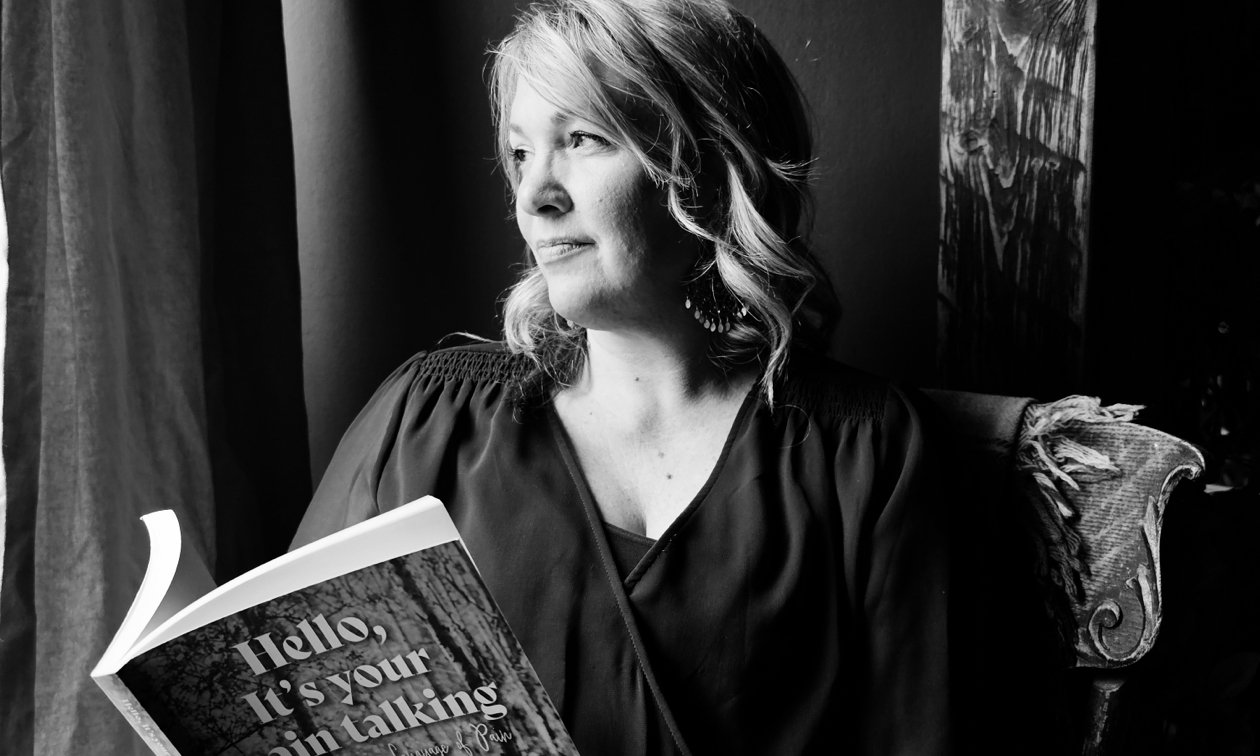
Can you give me an example of how you’ve helped a client through that approach?
I’ll share one of my most recent experiences. I’ve been working with this client for a couple of years, and last week he came in just completely distraught. It was heartbreaking to see. His shoulder hurt so badly he could barely walk, couldn’t get out of bed, couldn’t carry out his normal daily routines.
So, I started working on his shoulder and asked him, “What’s going on? You’ve never had this kind of pain before—what happened?” And he told me he’d thrown a bag into a garbage bin, and after that, his shoulder was wrecked. He believed he’d torn something and that it was all downhill from there.
As I kept working on him and trying to reassure him, I said, “You know, your body is designed to heal—that’s its entire purpose. You’re going to be okay.” And then we got to talking more about that garbage bag he’d thrown. He said it was full of kitty litter and cat stuff. So I asked, “Your cat stuff? What do you mean?” And that’s when he told me—his cat had died that same day.
So, here he was, experiencing this huge emotional loss, and it turns out, that was the real root of his pain. Was he completely healed when he walked out of the room? No—but we connected the emotional and physical experiences he was going through, and that started him on his healing path.
It sounds like what that client was experiencing wasn’t just physical—it was something more?
Absolutely. When someone hits a critical pain episode, I often say—half-jokingly—you could probably name ten different things going on in their life at that moment. And as humans, I think we can manage two, maybe three or four major stressors at a time. We expect to work hard, provide for our families, manage relationships—that’s all part of life. But when extra pressure starts piling on, it becomes too much for the system.
And that’s the key word: system. That’s one of the biggest insights I’ve learned—and I didn’t read it somewhere, it’s just something I’ve come to understand through my work. We are not just a collection of separate parts. We’re a whole system—physically, emotionally, and mentally. Everything is connected.
I like to use the car analogy: if you turn the key in a car, every part needs to work together for it to run. You can’t have three tires and expect it to drive smoothly—unless you’re on a trike! And even if you’ve got four brand new tires, without an engine, you’re not going anywhere. It’s the same with our bodies. If something’s off—physically, mentally, emotionally—it affects the whole system.
So you're saying pain is like the warning light in a vehicle?
Exactly! I was driving recently and the maintenance light came on—and it got me thinking: our bodies don’t come with dashboard lights or a manual. What we do get is language. And not just spoken language, but the language of the body. That’s how it communicates.
And one of those languages is pain?
Yes! But the problem is, most of us are terrified of pain. When it shows up, our minds go straight to worst-case scenarios: “I’ll have to change careers,” “I’ll be in pain for the rest of my life,” “This is the beginning of the end.” That fear takes over, and it becomes paralyzing.
But once I understood that pain is just communication, it changed everything. It gave me freedom. Because when you sit with yourself and listen—really listen—you start to understand what’s going on. And with that understanding comes autonomy. You have the power to do something about it, or at least face it.
Like one of my clients—he installs cabinets. He came in, his shoulder hurt so badly he couldn’t even touch the skin without pain. He was in full panic mode, thinking he’d have to quit his job, retrain, figure out a whole new career. And he’s the sole provider for his family—that kind of fear is huge.
But I reassured him: “This is your body talking. It’s just muscles. One’s overworked, another’s underworked. Let’s find the imbalance, correct it, and restore function.” He had one treatment, followed through with his exercises for two days—and by Monday, he was back to work. Still installing cabinets.
That fear he had—while real—was a bit unfounded?
Totally. Pain can send our minds spiraling into all kinds of worst-case scenarios. But if we learn to understand it differently, that fear starts to fade.
What inspired you to write Hello, It’s Your Pain Talking?
Well, it really started with my own experience of pain. I was trying to figure it out for myself, and over time, certain moments began to stand out. All of it made me start to think differently about the body and about pain.
I started wondering: What if I didn’t focus on the pain itself? What if I tried to understand where it was coming from—what the root cause was?
Then COVID hit—and as an extrovert, it forced me to stop focusing on others and turn inward. I asked myself: Who am I? Where am I going? I started walking for miles every day, listening to that small voice in my head. Those two years were transformative.
I had this big idea—I was going to start a massage retreat. I even sold our family home to pursue it. All the while, this little voice kept whispering, “You should write a book. Tell people how you came to understand pain.” Because every time I’d explain it to a client, I’d see that lightbulb go off in their head. You could see the fear start to melt away. And I thought, maybe this could help more people.
And I know it might sound a little morbid, but I thought: “What if I died in a car accident and never shared these thoughts? What if someone out there is suffering, and this could help them—even just one person?” That idea wouldn’t leave me alone.
Finally, one morning, I woke up at 4 a.m., sat down, and started writing chapter one. I wrote 80 pages. And they were… terrible. I refocused, and I started over—from scratch. Every morning from 4 to 6 a.m., I wrote. Day after day. And two and a half years later, the book was finished.
Who is the book for? Who do you think would benefit from reading it?
It’s for anyone who’s searching for answers. For people who want to take ownership over their lives—who are seeking a different way to think about life and their journey through it.
More specifically, it’s for people who think a little differently.
For a lot of people, the mainstream approach to health and healing works great. They get by, they’re happy. But that wasn’t me. It didn’t work for me. So I wrote this book for people like me—for those who are looking for a deeper understanding, a different way of looking at pain and healing.
It’s about looking at life, pain, and healing in a more holistic way. And I have to admit—I’ve never really liked the word “holistic.” It kind of makes me think of, you know, “woo-woo” stuff. But I actually looked up the definition of holistic, because I wanted to make peace with it. And it just means looking at the whole—not just the pain, not just the stress. And that makes sense to me.
In our culture, we’ve gotten really good at compartmentalizing everything: “I have stress at work.” “My kids are driving me crazy.” “I can’t eat onions.” “I’m allergic to dairy.” We put everything into these neat little folders, like a filing cabinet.
Then when something goes wrong, we pull out one file and say, “Ah, this is it.” But in reality, I’m saying—it’s the whole cabinet.
But actually, here’s an interesting caveat to that. I know a lot of people who live with chronic pain, and they often try to ignore it. It’s like they’re in so much pain, all the time, that they become overwhelmed and just… can’t face it. They can’t even look at it.
Is that kind of like a macho guy thing? Like, “I’m just gonna push through it."
I think it’s more about fear. It’s not so much about being tough. It can be really hard to stop and reflect on why we’re in pain. Let’s say you’re a receptionist or a truck driver—you can’t just stop working because you’re in pain. So the real issue underneath is fear.
And that’s actually one of the big ideas in the book. Deciphering the language of pain means learning to love your pain, not fear it. When you love the pain, you can say: "Thank you for talking to me. Okay—let’s figure this out together. Let’s reflect on what’s going on. What do we need? What have we been doing? Thank you, body, for getting my attention."
I actually wrote a blog post once called “Stop Blaming Your Poor Body.” We tend to say things like, “Oh, it’s my shoulder,” or “It’s my diaphragm,” like we’re blaming these parts. But really, it’s just the part of your body that’s speaking up. It’s saying, “Hey—we need to figure this out.” Because your body actually loves you. It’s trying to protect you. It’s saying, “if we keep doing what we’re doing, we’re going to crash.”
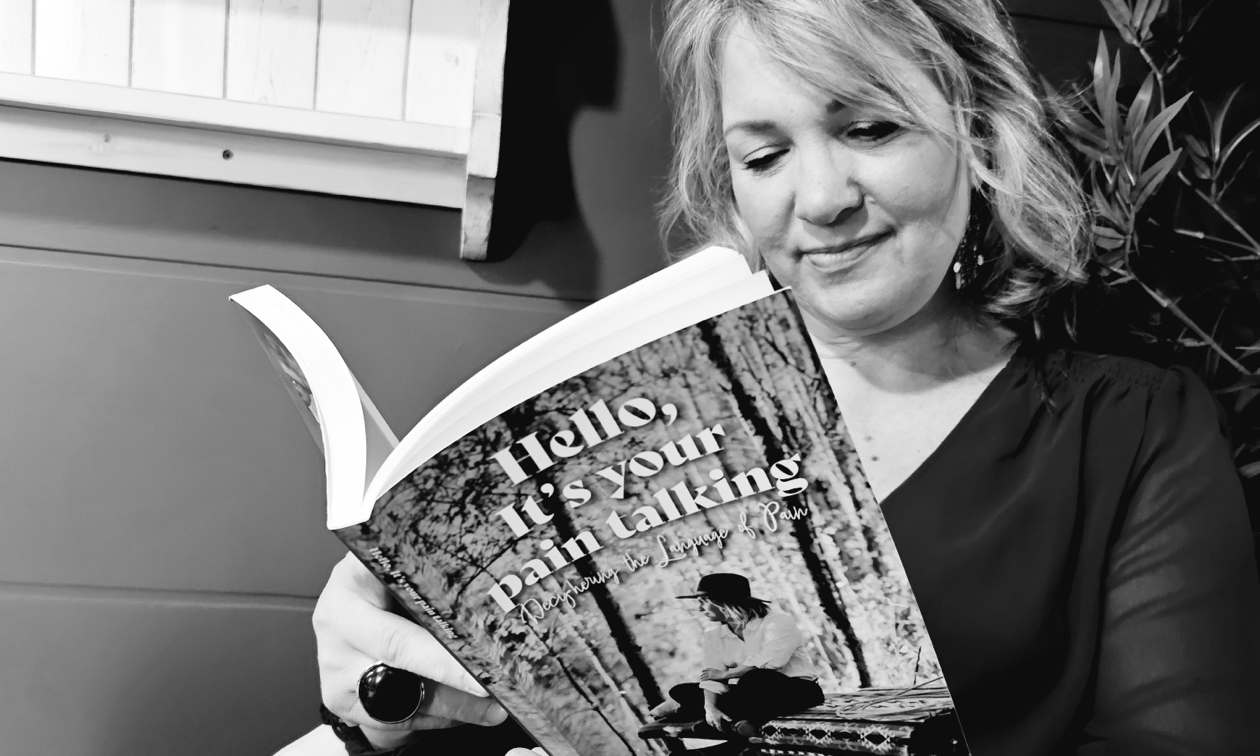
What would you say is the first step in that process?
First of all, awareness—that’s step one. Recognizing that your body loves you, and when it's giving you pain, it's actually trying to communicate with you.
Step two is taking time to reflect. We humans love to micromanage—we try to fix our bodies through control. But healing doesn't always work like that. Our bodies need time and stillness to process and figure things out.
Sometimes, reflection can bring insight in just five minutes. But it only comes when you slow down. It’s kind of like learning a language. If you’re trying to learn Spanish and someone drops you into the middle of a noisy mall, you're not going to pick up much. But if you're at home, with your Rosetta Stone program open, in a quiet space, you can take your time—and eventually, it starts to click. That’s why I refer to pain as a language, and my book actually draws on the idea of the Rosetta Stone—it’s about helping people translate what their body is saying.
Step three is starting to work with your body. That means listening to that little voice that says, “I think it might be this,” and then trying to understand what’s being overused, what’s too tight, and what’s being stretched or weakened.
Say you just drove to Vancouver, did a bunch of yard work, then collapsed on the couch, and finally curled up to sleep. That’s hours and hours—maybe 36 total—of your front body being in a contracted, forward position. Your rib cage is compressed, your abs are tight, your shoulders are forward.
And what about your back? All of those muscles have been stretched and lengthened—and over time, that equals weakness. So the next day, your low back starts screaming. But it’s not the front muscles you used that are hurting—it’s the muscles that were under strain and are now weak. And what do we do? We stretch them more.
But we need to stop and say, “No—this is weakness.”
Pain = Weakness. That’s my mantra. I’ll scream it from the mountaintops. There is something weak in the body that needs strength. And when you answer pain with targeted strength—you begin to rebalance the body.
This isn’t just physical—it applies to mental and emotional pain too. Pain is a signal of stress, imbalance, or overuse. And once you understand that, you can start to restore balance. It’s actually not that hard. It just feels complicated because it’s so different from how we’ve been taught to think.
It's almost counterintuitive to how we naturally think about pain.
Exactly. What’s going through our mind in those moments is often the opposite of what we actually need. And that’s why just a little bit of knowledge can go such a long way. That’s all I try to give people—just a small shift in understanding. Because once you have that, you can apply it to any body part—your knees, hips, whatever—and start figuring out why you're in pain.
What is the main takeaway you hope readers get from your book?
The number one thing I want people to take away is this: You have autonomy. You have power.
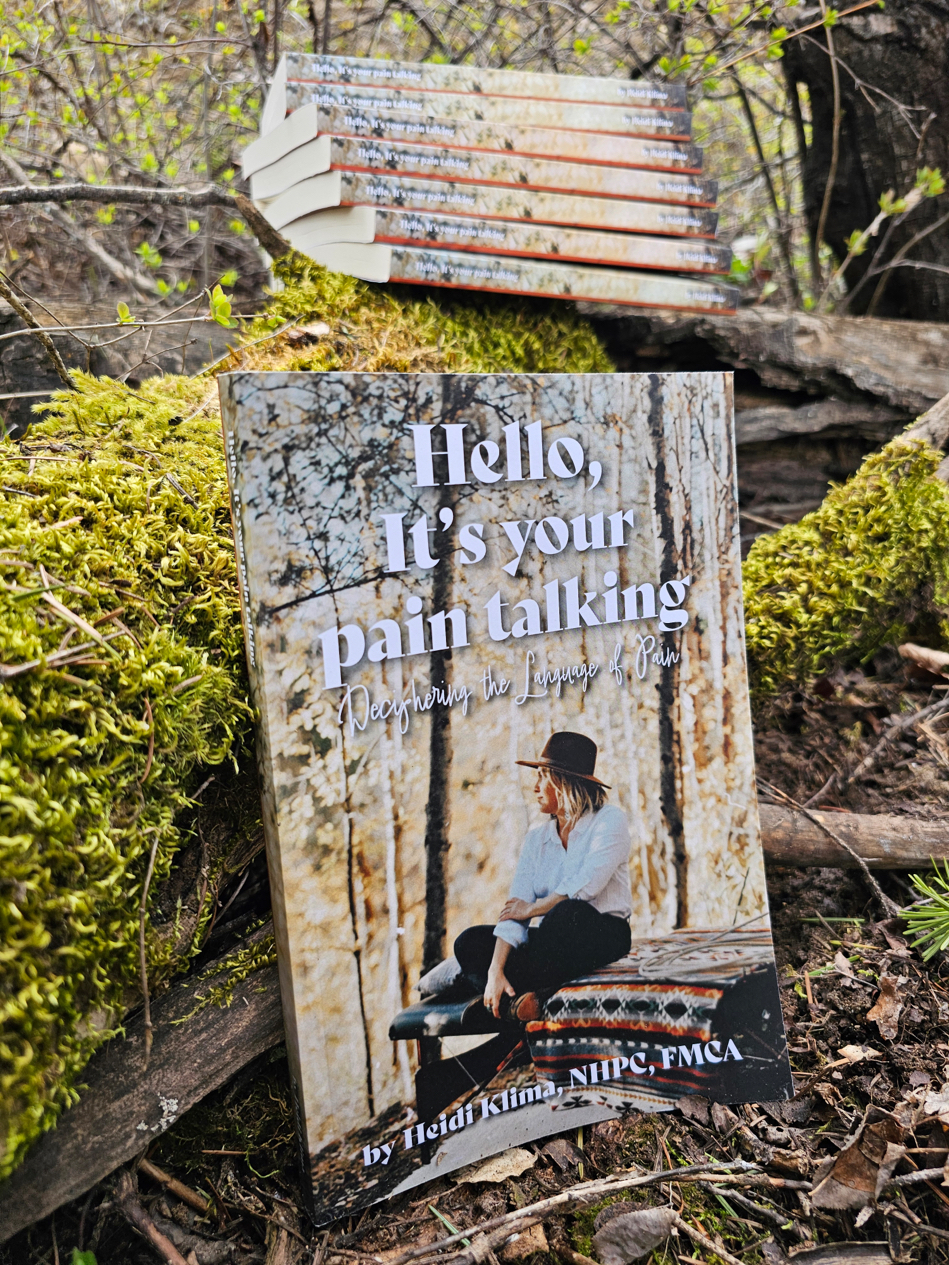
You are so much stronger—and smarter—than you give yourself credit for. If you listen to your body, reflect on what it’s telling you, and learn to respond with care, you can achieve incredible things. I’ve seen so many examples of people being told, “You’ll never walk again,” and yet—they do. All over the world, there are stories like that. That same potential is inside you.
We live in a world overflowing with information. What we really need is simplicity. Trust yourself. I’m not talking about becoming some off-grid healer with dried herbs hanging from the rafters. That’s not me at all. I just believe healing doesn’t have to be so complicated. Simple doesn’t mean easy—but it does mean doable.
So yeah… power. That’s really what I hope people feel.
Let’s talk about the entrepreneurial side of Heidi. From what I understand, you didn’t just write a book—you’ve got some other things in the works, right?
Right! My original business idea was to start a massage retreat. I did a ton of research, and I was shocked to find that massage retreats aren’t really a thing. You can go to yoga retreats, fitness retreats, smoothie retreats—there are retreats for everything—but not massage-specific ones.
Massage is literally designed to help rebalance the body. So my ultimate goal is to create a retreat experience where people come, stay for a short time and receive a couple of 90-minute massage treatments. It’s a two-night stay in our suite attached to the massage studio, with breakfast provided.
You will receive a total of four 90 minutes treatments over a two-night/three-day stay.To some people, that might sound intense, but honestly, we’re tough. Most of us don’t have time to go to weekly appointments for months. It is my belief that I can completely rebalance someone’s body in that condensed format, granted of course that they do not have a major underlying condition like cancer, for example.
Where are you in that process right now?
I’ve got my massage studio set up, and I have a rental suite where guests can stay. It’s not the prettiest thing on the outside yet—but perfection is an illusion, right? So I’d say this year will be a soft opening.
At the same time, I’ll be focusing more on promoting my book and launching a videocast called Broken Wings: Reframing Pain. I’m planning eight episodes, featuring both interviews and real retreat clients. The idea is to test my retreat model and study the effects—really dig into how we can rebalance the body in a short timeframe.
Tell me about Broken Wing—where did that name come from?
It actually came from a country song. There’s a line that says, “With a broken wing, she still carries her dreams. You ought to see her fly.” That really resonated with me.
We all have broken wings. Every one of us has something we’re healing from—or have had to heal from. But that doesn’t mean we’re powerless or that we can’t move forward and do something meaningful. I believe every human has purpose, value, and something to offer this world.
So the name Broken Wing really represents that idea—that we can still fly, even while we’re healing.
Broken Wing Massage Retreat is the umbrella name for the retreat and everything I’m working on around it.
It’s a soft opening for now, but if someone wanted to reach out?
They can definitely connect through my website. There’s a contact form where people can tell me a bit about their story, and we’ll take it from there.
And just so you know—I love talking. A lot of my own learning has come from podcasts, books, videocasts, and YouTube. It’s an incredible treasure trove of free knowledge. That’s part of what drives me to give back—to share what I’ve learned and hopefully help someone else.
Oh—and I applied for a grant through TELUS StoryHive and got it! So now I’m diving into this next chapter. But my number one priority will always be my family—as they’ll be quick to remind you!
Would you say the podcast is part of your way of giving back?
Yes, absolutely. The podcast is my way of giving back because we live in abundance. We really do have everything we need in this world. We don’t need a million dollars or complicated solutions. Healing can—and should—be simple and low-cost.
Like in life—you can grow your own vegetables or shop at the organic section. It’s a menu of options. And that’s how I see my offerings: my videocast is free, my book costs less than a fast-food lunch, and the retreat is like the filet mignon option. It depends on what someone wants or needs.
And as some of us get older, if we don’t have our health… what else is there? How do we really enjoy life if we’re constantly in pain?
That’s such a good question. One of the chapters in my book talks about Stephen Hawking. He’s always inspired me—he lived way beyond his prognosis, had a family, wrote books, gave lectures, and enjoyed his life… even though he lived with pain. So yes, pain is part of life. We’re never going to be completely free of it.
In fact, after I submitted my book for formatting, I had one of the worst pain episodes of my life—in a hotel room in Italy. It was intense. But understanding pain takes away the fear of it. Even though I had to work through some tough stuff, I did it—and today, I’m not in that pain anymore.
Pain will always be with us. And as we get older, maybe we feel it more because we understand more. But here’s the thing: there are people who literally can’t feel pain, and that’s a dangerous condition. They don’t know when they’re injured or sick, and it makes life really difficult. So we need pain. It’s here for a reason—it’s our body’s way of communicating.
If we can learn to listen to it, work with it, and not fear it… it’s life-changing.

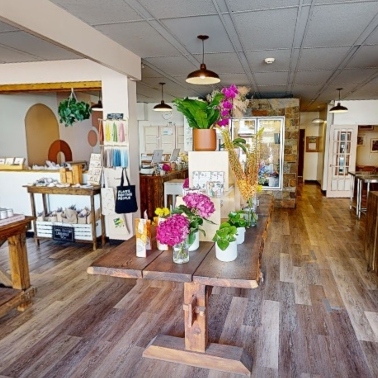
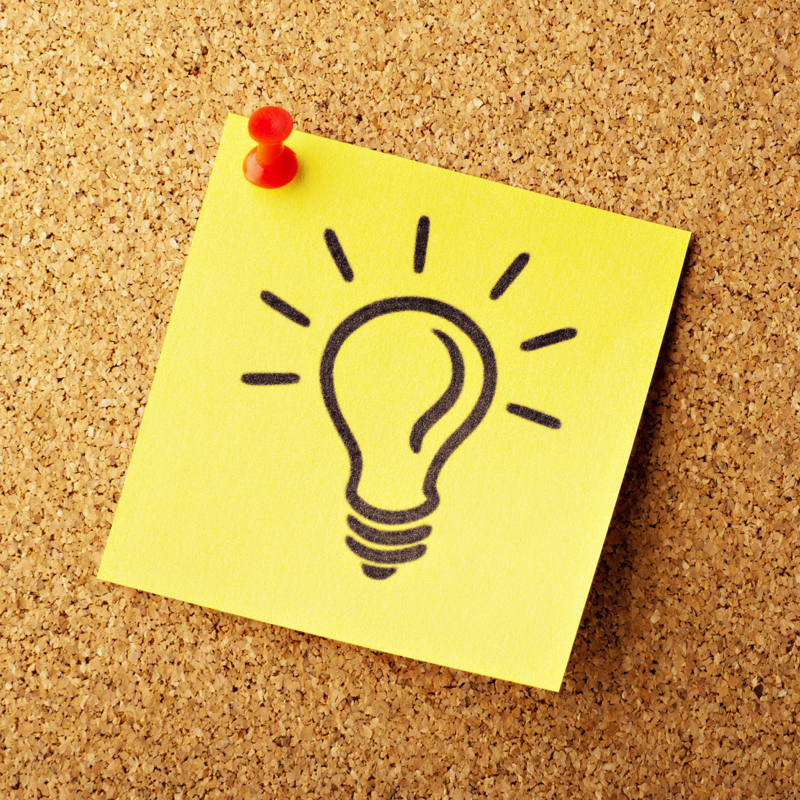
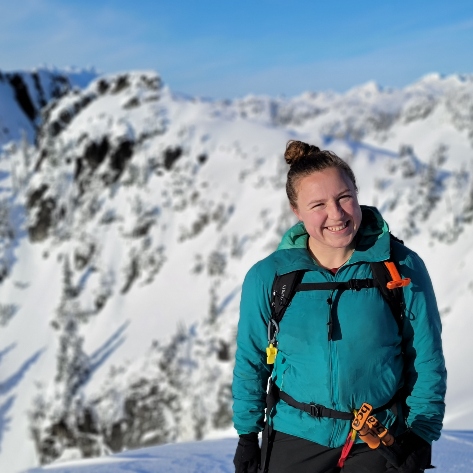
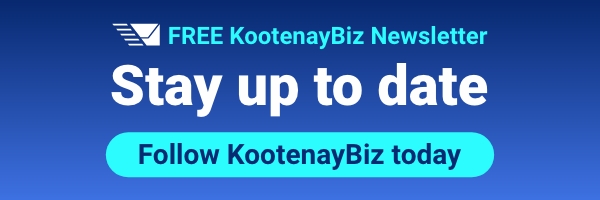
Comments